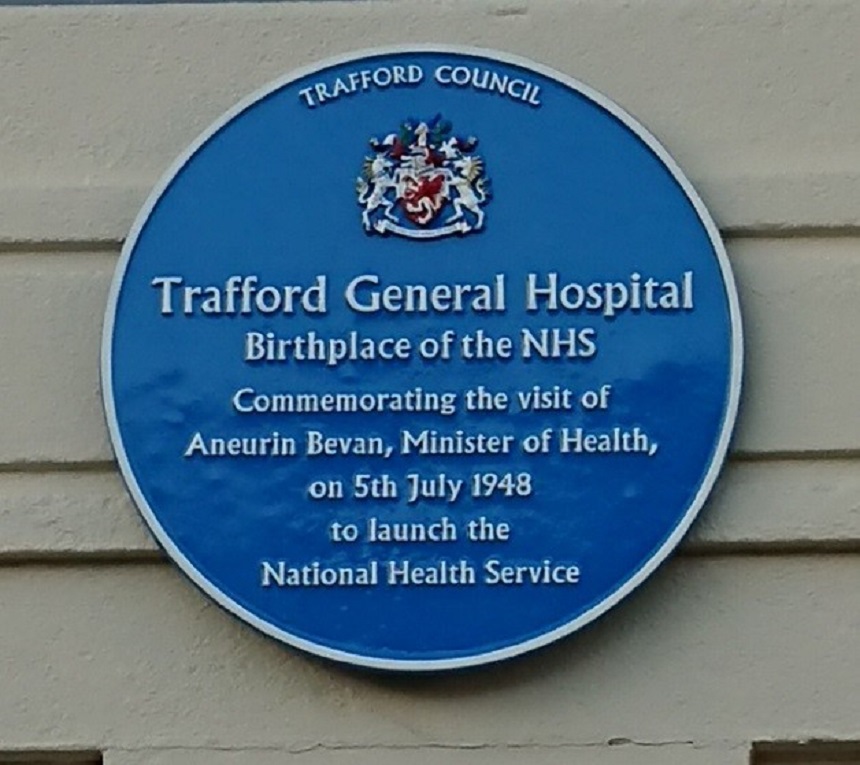Dementia-friendly audit - Trafford General Hospital, Greater Manchester
Learning from a hospital site visit 'walk through', to improve patient experience. for people with dementia.

The Purpose
The hospital wanted to find out from people with dementia
- how easy the ward environments are to use and navigate at Trafford General Hospital
- whether anything might be done to make the environment more friendly and easy to use.
Preparation
The Dementia Specialist Nurse, Emma Ramsdale wanted to add to ideas she had from desktop research, by learning from the experience of people living with dementia in the ward environment.
There were too many wards to audit in one visit. So the team decided to start by auditing two wards which admit more patients with dementia
- Ward 2 (Complex Discharge Unit)
- Ward 6 (Fragility Rehabilitation).
The team asked Alzheimer's Society to help them.
The team did not want to involve current hospital patients in case they may not feel able to comment whilst being cared for, and as many of them are very poorly or recovering from ill health.
The team was particularly interested in learning what small actions they could take, that could make a real difference to the experience of people with dementia using the wards.
What happened
After discussion around using the EHE Environmental Assessment Tool, the people living with dementia said that they would prefer to ‘walk’ the wards and make comments which would be transcribed by Alzheimer’s Society Staff.
The audit was carried out in wards 2 and 6 as planned.
Ward 6 has already had improvements made to increase dementia friendliness.
The people with dementia provided valuable insights from their experience of the ward environments.
They identified things that could be improved. They also offered ideas on how and why to improve those things. Some of what they commented on:
- low levels of lighting in the corridors.
- the amount of information on walls was a bit overwhelming. Removing some of the reminiscence posters and grouping information into themes would be helpful.
- thin curtains could cause problems if sundowning is an issue so would be good to replace in due course with thicker ones to block out reflection.
- a clock in a dayroom with a swinging pendulum was distracting and made it difficult to focus on conversation. A big dementia-friendly clock would be better.
- chairs could do with rubber or felt under their legs as they were very noisy when pulled across the floor and the sound was distressing.
- signage was not always clear.
- wallpaper in one of the dayrooms had large flower prints with dark outline which might be perceived as ants crawling on the wall.
- some flooring with dramatic contrast of colours. One of the people with dementia felt that other people with dementia might try to ‘step over’ the border and this could pose a falls risk.
They fedback about what they found helpful such as
- grab rails in contrasting colours
- the colour scheme in some of the bays was ‘bold but without being in your face.’
- 'brighter and less cluttered' bays in the ward which has already had some changes made to make it more dementia-friendly.
- the ‘homely’ atmosphere of the day rooms
- clear signage.
The Results
The people with dementia identified areas for improvement that could be achieved quickly and at low cost. For example: one person with dementia observed how the reflective surface on a wall light in Ward 6 might cause distraction or distress. The Dementia Specialist Nurse said she found this insight particularly useful because if someone did become distressed, she would have looked for other causes such as hunger or thirst. She would not have considered the light as a possible cause. The risk of the reflective surface causing distress could be removed by painting the surface in a matt colour.
They also identified areas for potential improvement if the hospital was able and willing to make bigger change that would take longer to achieve, such as addressing the pattern on some of the flooring.
The Dementia Specialist Nurse will present the outcomes of the audit at the next Dementia Steering Group in May. She will be able to discuss a plan for action to make the recommended improvements to the environment.
What changed for people with dementia
The audit took place at the end of February 2019. It will take a while for the full impact to become known,
The hospital found it to be a valuable experience. The Dementia Specialist Nurse would like to look at learning from the experience and insights of people with dementia in other areas of the hospital in the future.
The Dementia Specialist Nurse has asked that the hospital continues to work with Alzheimer’s Society and does more activity involving people affected by dementia in sharing their experience and insights to help improve the care of people with dementia and to support carers.
Learning points
Learning came not just from what the people with dementia said, but also from observation of their experience of the ward environment. For example, while walking in the corridors, one of the people with dementia became very quiet. Asked about this, he revealed that he was feeling a bit disorientated there.
Key contacts to find out more
Dementia Voice Team, Alzheimer's Society. Email: [email protected]
Emma Ramsdale, Dementia Specialist Nurse, Trafford General Hospital, Moorside Road, Davyhulme, Manchester, M41 5SL
Useful Links
Central Manchester University Hospitals Foundation Trust: Dementia Strategy 'Remember Me'







